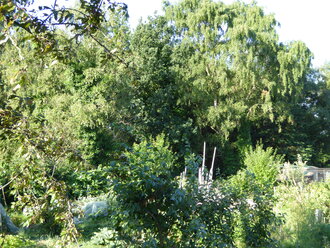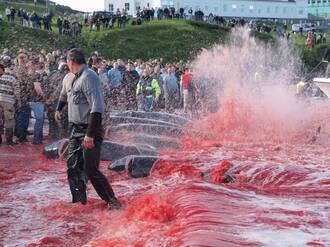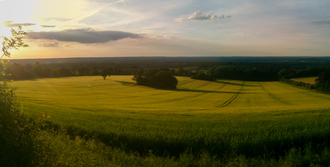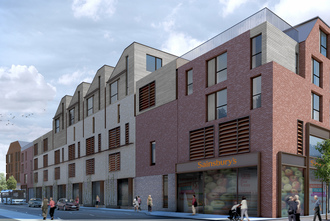-
Save Woodside CopseWoodside Copse is a precious wildlife sanctuary. Untouched for 50 years, it is home to many species of birds and animals. It adds to the biodiversity of the area and forms part of a vital green corridor. Designated a Site of Importance for Nature Conservation, it is under threat following Haringey's decision on 6 July to allow the site to be developed. There is an alternative. The development could be put on the applicant's own site nearby, which would take up only a small portion of its site.627 of 800 SignaturesCreated by Isabel Popper
-
Ban the import of all Danish Goods.The Grind on the island of Vagur at Borg Beach is underway. On this same beach on June 10th 2015 they viciously slaughtered 110 whales and now they want to take between 100 and 200 more. It does not look like the whales can escape. The BRIGITTE BARDOT has been stopped by the Danish Navy.Two Sea Shepherd crew from the BARDOT have been arrested by the Danish Navy. All the courage and determination in the world cannot overcome the power of a Naval Frigate and an armed patrol ship. The police are on the beaches protecting the armed mob of whale killers from any acts of kindness that might occur. What is happening is a disgrace to humanity, to the Faroe Islands and to the nation of Denmark and every Danish citizen. It is a disgrace to Europe and is a blatant violation of European Union law. We call on the British Government to boycott all imports from Denmark and its protectorate countries until such time the people of the Faroe islands join us in the 21st Century.292 of 300 SignaturesCreated by Tim Beer
-
FREE PUBLIC TRANSPORT FOR UNDER 16's NATIONWIDEIn some areas, children's annual bus passes for September on wards are rising by a staggering 25%, for instance in Kent, a child's annual pass last year was at £200, this is now going to £250. Kent County Council also says it has to save £209 million over the next three years and so will increase the cost of its bus pass for 11 to 16-year-olds from £200 to £250 in September, a year after the price doubled from £100. The chairman of the Local Government Association’s Children and Young People’s Board, David Simmonds, told Schools Week that financial pressures were forcing many councils to scale back to meet their legal obligations “rather than go far beyond that – which is what they did historically”. For children under 8, councils are obliged to provide transport for pupils living more than two miles from the nearest suitable school. For those aged between 8 and 16, the statutory duty is to provide transport for those living more than three miles away. In rural areas, councils had traditionally provided free transport, although it was not a legal duty. It's now being eroded because of yet more cuts. This is going to affect so many people all over the country with Kent County Council being hit with the steepest rises with the best explanation being due to cuts needed in a council letting down not only the most vulnerable but the many people that are working so hard just to pay the bills and put food on the table that will have to not only find money for uniform and school essentials but also £250. The only legal obligation being kept nationwide is that to provide free travel for the over 65's Free school travel for children will have huge positives. - Attendance will be higher - Congestion and traffic will be minimised - Less road related accidents to children who walk near schools due to less traffic. Examples of how this is promoted in councils that RECOGNISE that free school buss pass's are the way forward; LONDON Children under the age of 11 only need a 5-10 Zip Oyster photocard to travel free on Tube, DLR, London Overground, TfL Rail and some National Rail services if they: Travel without an adult Look older than 10 A 5-10 Zip Oyster photocard isn't needed for your child to travel free on buses and trams or to buy child-rate paper tickets. If you think your child doesn't need a 5-10 Zip Oyster photocard, find out more about travelling with children. Children aged over 10 years and 11 months and under 16 on 31 August can get an 11-15 Zip Oyster photocard to travel free on buses and trams, and child rate on Tube, DLR, London Overground, TfL Rail and most National Rail services in London. CITY OF BRADFORD "Where walking/cycling is not possible, please consider public transport before using the family car on the school run, public transport is miles better for the environment and cuts down on traffic and pollution. Many secondary school pupils travel to school by public transport and the journey to a new school is often the first step your child will take toward independent travel; Bus services provide a safe and reliable way to get to school. Instead of giving your child a lift all the way to school why not consider dropping off at a bus stop or train station so that your child can continue their journey by public transport with friends?" All pupils in full time education are entitled to purchase a weekly School Plus Metro Card or for those occasional bus users pay half fare on public transport; please contact Metro for more information. Bus services run to or close by many local secondary and primary schools. To find out which buses serve your school and get up to date information on school travel please visit the Generation M website. Bradford Council is committed to reducing car travel which is a major source of pollution and congestion around school gates and encourages schools to produce a School Travel Plan setting out their commitment to sustainable school travel. Please ask your headteacher for more information on your School's Travel Plan Your child needs you to show them the way to sustainability. Reduce your car use and improve their quality of life. PLEASE SIGN AND SHARE ~ Together We Can Make A Difference ~532 of 600 SignaturesCreated by Kerry Keating

-
Stop the UK government killing off the UK solar industryThe Dept for Energy and Climate Change has just unveiled sweeping plans to slash subsidies to solar power. They are proposing measures that include cutting aid to small-scale solar power installations, and ending subsidies for roof-top panels earlier than expected. Solar and wind energy installations of less than 5MW are supported by feed-in tariffs - schemes that pay producers a subsidy for the electricity they generate, plus a bonus for any electricity exported back to the national grid. Under the new proposals, the amount to be paid from next year will fall to 1.63p per kilowatt hour from a current level of 12.92p for a new residential solar system. This is a hugely short sighted move by the government and is devastating for Britain's solar sector which employs over 35,000 people. The Secretary of State herself has stated that the total cost this year of the solar RO was just £3 per household on energy bills. Ending support for solar power makes no sense at all. The energy market currently has a wide range of subsidies and tax allowances in place, across all the technologies – renewables, nuclear and gas - and not all of these are transparent when it comes to the consumer. They have made these announcements after the House of Commons has risen for the summer recess so proper scrutiny in Parliament will now not be possible until after the consultation deadline. The Welsh government is already concerned, a spokesperson said the plans have the "potential to put jobs and investment under threat by reducing subsidies to projects already in the pipeline". The government is deliberately over-exaggerating the impact of renewable energy on bills and the timing of this move on solar power could not be worse as it is nearly subsidy free. Greenpeace pointed out that the government's maximum additional spend on green technologies by 2018 would be approximately half of what it spends subsidising the coal industry. Other groups called the changes "absurd". "Of course the feed-in tariff should fall as solar becomes cheaper, but the government clearly plans to remove support entirely," said Alasdair Cameron from Friends of the Earth. "This is politically motivated, and will take away power from people and hand it back to big energy firms." “Cutting the subsidies now will see businesses go bust and investment dry up. Jobs will go and emissions will stay higher at a time when policies and funding should be in place to ensure quite the opposite,” said Daisy Sands, head of the energy campaign at Greenpeace. Ray Noble, owner, Solar BIPV Ltd and Solar Power Portal outstanding achievement award winner has commented: "The decision to stop supporting the fastest deploying energy generation technology seems like madness to me. Especially when you consider that we are short of electricity, that solar has the biggest support of the the population; yet at the same time still giving 2 ROCs to other technologies that are creating the largest drain on the budget. Seems like winners are not liked and losers are preferred! “Combined with the cuts to wind subsidies, it looks like the government is gearing up for a full frontal attack on the renewable energy sector in the autumn while still handing out billion-pound tax breaks for oil and gas industry … It’s no good David Cameron saying how important the climate talks in Paris are, if the chancellor simultaneously weakens any shred of credibility of a claim to the UK’s low carbon leadership.” Please sign the petition now to help save jobs in the UK and support our commitment tackling climate change.32,198 of 35,000 SignaturesCreated by R V
-
Save the trees on Laity Lane, Carbis Bay, CornwallA temporary TPO was made on the 22 February 2015, and is only active for 6 months. After which time, the order is lifted or made permanent. One of the key elements in making this TPO permanent, is the support of not only local residents but visitors as well. The planned destruction of this beautiful stretch of trees and hedgerows is wrong because: - they act as a haven to local wildlife and flora. - they provide a significant contribution to the environmental quality and character of the area. - they enhance the enjoyment of both local residents & visitors alike. - their removal would have a significant, detrimental impact on the local environment and its enjoyment by the public. - Carbis Bay and the wider area of West Cornwall has scant tree cover as it is. Finally, perhaps most importantly, the trees and the hedgerows should be protected for their own sake202 of 300 SignaturesCreated by RAIID. COM
-
Ban weed killer Glyphosate sprayed on wheat just before it is harvestedThree months ago, the World Health Organisation’s International Agency for Research on Cancer (IARC), concluded ‘Glyphosate is probably carcinogenic to humans’. The newly recognised dangers of Glyphosate come against a background of increased use in the UK – not just in farming but also in public parks and other urban areas to kill weeds. On 15 July, new figures analysed by the Soil Association were released at a scientific briefing in London showing Glyphosate use in UK farming has increased by 400% in the last 20 years and it’s one of the three pesticides regularly found in routine testing of British bread - appearing in up to 30% of samples tested by the Defra committee on Pesticide Residues in Food (PRiF). The Soil Association is now calling for a UK ban on the use of Glyphosate sprayed on UK wheat as a pre-harvest weedkiller and its use to kill the crop to ripen it faster. The scientific panel included Professor Christopher Portier, one of the co-authors of the World Health Organisation’s International Agency for Research on Cancer’s (IARC) recent report which determined Glyphosate’s status as a probable carcinogen, who reiterated the IARC’s conclusions, and said: “Glyphosate is definitely genotoxic. There is no doubt in my mind.” We also heard from Dr Robin Mesnage of the Department of Medical and Molecular Genetics at Kings College in London, who revealed new data analysis showing Round Up, the most common brand of Glyphosate based herbicides, is 1,000 times more toxic than Glyphosate alone due to the inlusion of other toxic chemicals in its mix. Finally, Claire Robinson, an editor at GMWatch.org gave the international perspective looking at moves by other counrtries to ban Glyphosate; “Outside the United Kingdom, the reaction to the WHO IARC report has been dramatic. Some retailers in Switzerland and Germany have removed Glyphosate products and France has committed to do so by 2018 and German states are calling for an EU wide ban. The Danish Working Environment Authority has declared it as a carcinogen and El Salvador and Sri Lanka have banned it and the Colombia government has banned aerial spraying on coca crops.” Peter Melchett, Soil Association policy director said; “If Glyphosate ends up in bread it’s impossible for people to avoid it, unless they are eating organic. On the other hand, farmers could easily choose not to use Glyphosate as a spray on wheat crops – just before they are harvested. This is why the Soil Association is calling for the immediate ending of the use of Glyphosate sprays on wheat destined for use in bread. “We heard today that we shouldn’t rely on regulators to protect our health, the battle will be won by consumers ensuring retailers and bread manufacturers insist their products don’t contain any Glyphosate. Although the quantities found are below the official safety level, that limit was agreed before the latest scientific findings about the dangers of Glyphosate. The Glyphosate spraying season starts now, and in the interests of human health and the quality of British bread, the government needs to call a halt to the spraying before it starts.”911 of 1,000 SignaturesCreated by Anne Walker
-
zero carbon housing is goodWhile it may make new homes fractionally cheaper to buy, they will be much more costly to run for both the home owners and the planet. How will we meet our green emissions targets with retrograde steps like this?163 of 200 SignaturesCreated by candida lonsdale
-
Prioritise brownfield sites for development: protect precious green open spaceThis petition has been launched by the Protect Frome Valley @ Stapleton Community Association, formed in February 2015 in direct response to a proposed development on green open space adjacent to Eastville Park Lake (see photo opposite) that enjoyed multiple protective designations in Bristol’s planning policies and yet was still extremely vulnerable to what we regard as a speculative and wholly inappropriate development proposal. Bristol needs more homes: we recognise and accept this. We also recognise that this will place increasing pressure on our much loved and used green open spaces. However, Bristol does not need to sacrifice these precious and finite resources in order to meet this need. In its report ‘From Wasted Space to Living Spaces’, the Campaign to Protect Rural England (CPRE) identifies that up to 30,000 homes could be built on brownfield sites in the Bristol area. The report, based on research conducted by the University of the West of England (UWE), highlights Bristol as one of the few local authorities already doing much in this regard but acknowledges that more needs to be done – both locally and nationally – to protect green open space from being lost forever. The report’s recommendations call for: A clear and consistent ‘brownfield first’ approach in planning policy Bringing back an effective strategic tier of sub-regional or county level planning Ensuring that strong strategic and local plans are encouraged, implemented and updated across the country Giving the Homes and Communities Agency (HCA) greater powers and resources to redevelop large and difficult sites Developing a proactive approach to identifying brownfield land, with increased focus on regenerating large sites with multiple owners Reintroducing mandatory reporting to the National Land Use Database (NLUD) and make its data more accessible Providing assistance to smaller builders by identifying smaller sites and offering incentives for development such as the increased use of local development orders (LDOs) The full report can be found at http://bit.ly/cprerpt. We urge Bristol City Council to use the year of European Green Capital to adopt these recommendations so far as possible at City level, and in so doing develop Best Practice models as an example to other local authorities. As population densities increase, access to green open space becomes ever more important for our physical and mental wellbeing and for our beleaguered wildlife. We must make every effort to keep Bristol the wonderful place it is in which to live and work. If the legacy of our year of European Green Capital is to have any real meaning for the ordinary people of Bristol, it will lie in the quality of the Green Infrastructure that we hand on to the next generation. We urge you to support this petition. Please follow this link to the Bristol City Council e-petition site and sign the petition there , because if we reach 3,500 signatures on the BCC site, it will trigger a full council debate. http://bit.ly/bccpetn Thank You!118 of 200 SignaturesCreated by David Sandilands
-
Save Hog's Back and the Surrey Hills AONBThe Hog's Back is a steep chalk ridge that runs between the towns of Guildford and Farnham in Surrey. It is 154m above sea level at its highest point and provides far reaching and dramatic views across open countryside to the north and south. The ridge is a nationally important and much loved feature of the North Downs, formed during the last Ice Age and one of England's oldest known roads. Four farms (Blackwell, Wildfield, Chalk Pit and Manor) lie at its eastern end and are under threat from development. Guildford Borough Council has earmarked Blackwell Farm for a 2,250-home development and expansion of a business park in its draft Local Plan - a move that would burst through, and enclose, an area of ancient woodland, which forms the green belt boundary on the west side of Guildford. This sprawl would open up the floodgates for a ribbon development along the slopes of Hog’s Back. The University of Surrey, which owns the land, is already pushing to increase the development to 265 hectares (3,250 homes). This is despite promises to open up this area as an informal recreational space - promises made when the University took 64 hectares out of green belt in 2004. The farmland under threat lies on the boundary to the Surrey Hills AONB and provides views into, and out of, the Hog's Back ridge. Part of site lies within the AONB. It also includes a designated Area of Great Landscape Value, areas of ancient woodland, areas of Grade 2 and 3a farmland, medieval hedgerows, and remnants of 18th century parkland. It is adjacent to a scheduled ancient monument and to a Site of Nature Conservation Importance, and is home to many rare flora and fauna, including 4 bird species of principal importance for biodiversity. The site is also of historic importance: it includes that last remaining undeveloped corner of Guildford Royal Park - Henry II's hunting ground and an important part of the town's heritage - and it provides the last remaining views of Guildford Cathedral where it rises from an entirely rural setting. The Hog's Back itself is steeped in history. It was used by worshippers travelling to Stonehenge and much later by pilgrims visiting Thomas a Becket’s shrine at Canterbury. Views from the ridge have been admired by literary figures, such as Daniel Defoe, Jane Austen, Lewis Carroll (who is buried on the Hogs Back) and Aldous Huxley. Save Hogs Back is opposed to the development of these farms and any further urbanisation of the Hog's Back landscape. We call on Guildford Borough Council to withdraw this site from its Local Plan, and on Brandon Lewis to tighten up planning legislation so that there is more robust protection for AONBs and their settings. We also call on the University of Surrey to abandon its plans to cash in on this land and instead to honour its promise to the people of Guildford to open up this area for walkers, riders, cyclists etc, whilst keeping it as a working farm. For further information, please visit www.savehogsback.co.uk18,318 of 20,000 SignaturesCreated by Karen Stevens
-
Simple law to stop misery of shoddy products.Imagine if manufacturers had to say how long they expect their products to last and backed it with a guarantee. For the first time people will be able to make a real choice when they buy something. e.g. "Do I get the £15 kettle that lasts 1 year? or the £30 kettle that lasts 5-6 years?" This makes things simple. We deserve to know what we are buying! "Planned Obsolescence" (where manufacturers purposefully design their products to break or be unfixable) is on the rise. It might bring profits in for shortsighted companies, but it is a growing disaster for the environment and it means that we are stuck buying the same shoddy things again and again. Having your kettle/hoover/dishwasher break is not just annoying, it traps people in a cycle of poverty. But there's something we can do! If people know how long something is expected to last, we can see if the "cheap prices" are really worth it. It's likely that companies will realise that have to do better, and up the durability of their products or risk having to publish some dismal figures. Us consumers have been trapped by these companies strategies for too long and it's time for us to get some power back. The power of choice. Please sign the petition. The planet will thank us all. We can do it! Tara PS. Follow and share the campaign with the hashtag #built2break11,661 of 15,000 SignaturesCreated by Tara Button
-
Save Winchester, the ancient capital of EnglandWinchester was an important Roman city and later became the Anglo-Saxon capital of Wessex under King Alfred the Great. It is the birthplace of England, where much of its language, heritage, culture, democracy, education and law was established, and it holds an exceptional position in British history. The Silver Hill proposals encompass 5 acres, a very considerable proportion of the city centre, and they constitute the most significant and contentious development in Winchester’s modern history. Everyone agrees that this part of the city centre needs to be regenerated, but the objections of thousands of residents to the current proposals are due to the overwhelming scale and dismal nature of its architecture. A dull and uniform mass of such size will suffocate the appeal and character of an historic cathedral city. It will jeopardize the city’s future vitality, and its outdated retail concept will emasculate the city’s thriving high street, the oldest in northern Europe. The objections are also based on Winchester City Council’s failure to procure the contract, so that over the last 13 years they have only ever considered the one proposal by the one developer, T.H. Real Estate (aka Henderson). Residents have questioned why, when Winchester is so full of architectural talent, has the Council never considered any alternative, more sympathetic proposals for what should be a civic-led development. They have also asked how, when Henderson’s 2014 proposal was derailed by a Judicial Review, the Council has agreed to let Henderson revert to an earlier version of the proposal approved in 2009, which both parties declared was unviable. Despite being roundly criticised by a High Court Judge for being in “serious breach” of the procurement regulations, the Council has failed to take the opportunity it has had to remedy the situation, the result being the relentless progress of a senseless and entirely predictable disaster, in the face of huge opposition. Winchester was the foundation of England, and the joyous charm of its city centre reflects a spirit of a cohesive community respectful of its historic environment. Don’t let that be lost. Winchester deserves a future as rich as its past, and only with your intervention can that be assured. For more information on the campaign please visit: - the Winchester Deserves Better website: http://www.winchesterdeservesbetter.com/ - the Facebook page: https://www.facebook.com/winchesterdeservesbetter - or the Twitter page: https://twitter.com/Best4Winchester For more information on SAVE's alternative scheme, being developed by Winchester architect Huw Thomas, please see our website and press release: http://www.savebritainsheritage.org/news/campaign.php?id=343 To donate to SAVE Britain's Heritage and support the campaign please click on the 'donate' button on our homepage: http://www.savebritainsheritage.org/index.php4,994 of 5,000 SignaturesCreated by Clementine Cecil
-
No potentially harmful pesticides in Witney's public spaces!My son just like many other children like to play under trees in the park. Imagine my horror when I realised that a chemical called glyphosate had been used in the public area he and his friends chose to play in. The tell-tale signs are all around the Wadards Meadow area of Cogges in Witney, but this petition is to ask Cottsway to withdraw its use on every public area managed by they in any part of the district and country. There are many questions about glyphosate's safety and various studies have highlighted many concerns. Whilst glyphosate's safety is in question, we politely and with respect ask that Cottsway Housing Association stops using immediately. Find out more about glyphosate here: http://www.theecologist.org/News/news_analysis/2379278/glyphosate_is_a_disaster_for_human_health.html551 of 600 SignaturesCreated by Richard MacKenzie
Hello! We use cookies to improve your experience by providing insights into how the site is being used. Find out more.












